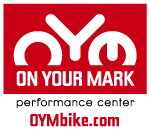Our Blog
Stay Cool in the Saddle: How Cyclists Can Avoid Heat Illness
Summer cycling can be exhilarating—longer days, scenic routes, and clear skies. But high temperatures also bring the risk of heat-related illness, which can creep up fast and derail even the strongest riders. Whether you're training for a race or just cruising your favorite trail, knowing how to manage heat is essential for performance, safety, and health.
Here’s how cyclists can beat the heat and stay in the saddle all summer long.
What Is Heat Illness?
Heat illness happens when your body struggles to regulate its temperature. For cyclists, the risk increases due to prolonged sun exposure, sweat loss, and the body heat generated during intense effort. Common types include:
-
Heat Cramps: Painful muscle spasms, often in the legs, from sweating and salt loss.
-
Heat Exhaustion: Symptoms like heavy sweating, nausea, dizziness, and weakness. Your body is overheating but hasn’t yet shut down.
-
Heat Stroke: A life-threatening emergency where your body can no longer cool itself. Symptoms include confusion, rapid heart rate, and a core body temperature over 103°F.
Essential Heat-Safety Tips for Cyclists
1. Hydrate Before, During, and After
Dehydration is one of the fastest ways to run into trouble. Drink plenty of fluids before your ride and sip water or an electrolyte drink every 15–20 minutes while cycling. For rides over an hour, make sure to replace sodium and other electrolytes.
2. Plan Your Rides Smartly
Avoid riding during peak heat (typically 10 AM to 4 PM). Opt for early morning or evening sessions when the sun is lower. Check the weather and heat index before you head out.
3. Dress for the Heat
Wear lightweight, moisture-wicking gear and a well-ventilated helmet. Consider a light-colored jersey to reflect sunlight and use cooling accessories like neck wraps or arm sleeves if needed.
4. Know When to Dial It Back
Adjust your pace and intensity based on the heat. If it’s hot and humid, your body has to work harder to cool itself. Listen to your body—slowing down is smarter than pushing through and risking collapse.
5. Sunscreen Is Part of Your Kit
Use SPF 30 or higher on all exposed skin. Reapply every two hours or more frequently if you're sweating heavily. A sunburn can impair your ability to cool down and sap your energy.
6. Drink Cold Fluids!
Drinking cold fluids is a game changer as it puts the chill nearest you're core. Insulated bottles are great, but the latest double wall stainless/titanium bottles are hard to beat.
Warning Signs on the Road
If you or a fellow rider starts showing signs of heat illness:
-
Heat Exhaustion: Stop riding, get to shade or indoors, hydrate, and use cool towels or water on the skin.
-
Heat Stroke: Call emergency services immediately. Try to cool the person with cold water or ice packs and do not give fluids if they're confused or unconscious.
Cyclists at Higher Risk
-
Riders not acclimated to the heat (especially early in the summer)
-
Older adults or those with medical conditions
-
Anyone doing long or high-intensity rides in hot conditions
If you’re just getting back into cycling or tackling new distances, take extra precautions.
Final Thoughts
Riding in the summer sun doesn’t have to be dangerous—but it does require preparation. Stay hydrated, dress smart, ride early, and know when to rest. Watch for signs of heat illness in yourself and your riding buddies. Your summer miles should be challenging, not hazardous.
Ride smart, stay cool, and keep the wheels turning!
